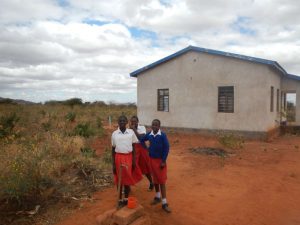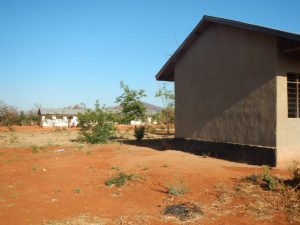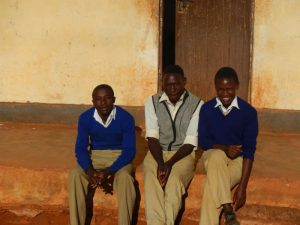 Location
Location
Kongwa District, Dodoma Region, Tanzania
Community Description
The community is predominantly a farming community. 90% of households depend on farming for food and income.
Mang’haila Secondary School is a small public school that draws from 6 villages in the surrounding area. There are about 150 students and 7 teachers at the school.
Problem Addressed
At secondary school, there is not an adequate water supply to meet daily needs. There is one pipe, but the water only comes on at night for a short period of time.
There is a great need for water for the students to use for drinking, in the restrooms, and for washing hands. Most students attend school from 6:30 A.M. to 3:00 P.M without a drink of water.
Project Description
This project is to build a 15,000-liter tank from local materials and install a gutter system to capture rainwater. The tank will be cylindrical, 3 meters tall, with a 2.5-meter diameter.
 First, a foundation for the tank will be built using sand, gravel, rocks, and cement. Above the foundation, the tank itself will be made from cement bricks and mortar.
First, a foundation for the tank will be built using sand, gravel, rocks, and cement. Above the foundation, the tank itself will be made from cement bricks and mortar.
The tank will be sealed on both the inside and the outside to prevent leaks and cracking. Inside the tank, the plaster will be used to prevent leaks. On the outside, a harder plaster will be used to prevent cracking.
A manhole will be built at the top of the tank so that it can be cleaned and inspected annually. Bracing will be placed halfway up the tank to support the additional outward force created when the tank is full.
The work will be done by a local mason, Fundi Hassan, who has sufficient work experience and has already built water tanks for schools within the Kongwa district. Students and teachers (on weekends and afternoons), and community members, will help with the manual labor to reduce the costs.
Using a gutter system, the tank will be filled by rainwater runoff from the tin roofs of two large classrooms adjacent to the tank. The gutters will be made from 26 gauge sheets. Sheets will be cut longways into three pieces and then bent to form a gutter. Therefore, each roofing sheet will provide 3 pieces of gutter.
The gutters will be mounted to the running boards at the bottom of the roof using screws and U-shaped brackets. A special, more rigid, the gutter piece will be used to piper the water from the roof directly to the tank.
Water will be drawn from the tank from a spout, which will be about a foot from the bottom of the tank so that sediment will settle below the spout. At the very bottom of the tank will be another larger spout that can be opened to let out sediment and other trash settling at the bottom of the tank.
 Also, another exit valve will be at the top of the tank for water to exist for when it is overfilled. This water will run off away from the tank so as to not cause any detrimental erosion around the tank and will be used to irrigate fruit trees planted nearby.
Also, another exit valve will be at the top of the tank for water to exist for when it is overfilled. This water will run off away from the tank so as to not cause any detrimental erosion around the tank and will be used to irrigate fruit trees planted nearby.
The water will be used for drinking (after treatment), flushing toilets and washing hands. The students will tote the water from the tank to the bathrooms.
Water Charity funds will be used for the construction of the tank, materials, transportation costs, and labor costs. The materials will include wood, gutters, cement, brackets, and screws.
The students and community will help reduce the cost by donating and transporting water, sand, and stone, and contributing unskilled labor.
The water catchment system will be maintained by the school. The inside of the tank will be cleaned annually before the rainy season and the school will provide funds for any repairs that the catchment system might need in the future.
After construction of the tank, students will start a perma-gardening program and use the water to irrigate their garden. Students will learn how to use water efficiently to farm different crops to provide a more balanced diet and generate income.
Project Impact
150 students and 7 teachers will benefit from the project.
Peace Corps Volunteer Directing Project
Kyle Shirley
Comments
This is a high-impact project, accomplishing a tremendous amount with a small infusion of capital. It will improve the health and wellbeing of the students and staff by providing a reliable and safe water source.
Dollar Amount of Project
$555.00
Donations Collected to Date
$550.00 plus additional funds for future projects
Dollar Amount Needed
$0.00 – This project has been fully funded through the generosity of friends and family of Peace Corps Volunteer Kyle Shirley, with additional funds for future projects. We particularly acknowledge the donations of $330 each from Brian Fackler of Roseville, CA, USA, and Robert McCleskey of Leesville, SC, USA.
This project has been completed.
We encourage others to continue to donate using the Donate button below, and we will notify Kyle of your donation. Additional funds will be used to fund the next project by Kyle and/or those of other PCVs in the country of service.
![]()